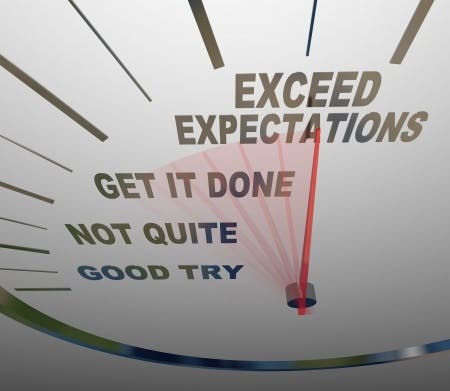I had the most remarkable conversation with a new client CEO this week. As a kickoff to the project, I wanted to understand his expectations about the work I was to do.
He is new to the organization and comes in the middle of a period of overwhelming growth and change. As we discussed his vision for the organization, and as he looked at his leadership team through that lens, he told me that he saw a reluctance on the part of his leadership team to say “no.”
When I pressed for details, he explained that his predecessor had focused on making customers happy, and so decisions were based upon that criteria and value system. But customer demands had also grown, and the staff was stretched thin along with the budget.
From this new CEO’s perspective, that desire to please runs into a brick wall when the organization starts doing work that they have neither resources nor capacity to do, nor that the customer expects as part of the value proposition. Of course, that means that the value proposition has to have been clearly communicated and accepted.
Setting clear expectations
His point is that, once you give in to a customer outside the scope of the agreement, the customer becomes emboldened to continue to ask, and expect more. If the organization is neither staffed nor resourced to provide the extra, they run the very real risk of over-spending or under-delivering, both of which can have catastrophic negative impact on the organization.
Expectations are powerful messages to customers. They are a yardstick by which customers judge the service and product. They are a test of reason when customer demands are unreasonable.
That got me thinking about the profession of Human Resources, and how we may be well served to explore this lesson within the context of the workforce.
We also have limited resources and limited staff. We cannot be everything to everyone, nor can we afford to provide things that are outside our service agreement, or outside the reasonable expectations of our customers – the leaders and employees of the organization.
I once joined an HR team whose mantra was “find a way to say yes.” Arguing with that is like arguing against motherhood and apple pie, but on closer examination of this HR team, it became obvious that they couldn’t keep up with the demands of 14,000 employees and leaders. As they over promised and under delivered, their credibility suffered because their expenses increased in order to fulfill requests, which continued to expand.
HR expectations
When the economy tightened, the organization tightened their belts along with it and the team was forced to make dramatic cuts in staff and expense, because the “customer” was no longer willing to foot the bill; they failed to see the value when times were difficult. That HR team trained their customers to ask for and expect anything, which worked well so long as staff and money were available to deliver.
- How can we do this differently? How can we make certain that we always meet our customers’ expectations? We can do it by being very careful to set the right expectations, provide services which the customer values, AND for which he will pay.
- But the customers don’t pay for the services of HR, you say? In truth, they do. HR may be an overhead department, but our expenses hit our customers’ bottom line. If they don’t see value, they won’t pay. They may be OK when times are good, but low value work will be the first to go when times get tough?
- How can we, in HR, set good expectations for our customers? The answer is simple, but difficult to do because our customers are not used to being treated as customers. But, we have to ask our customers what they need, tell them what it will cost, and let them make the buying decision. Otherwise, we are doing work that has not been requested, and run the risk of it not being valued.
Expectations of the value we will deliver
We have to be prepared to explain the value proposition in business terms that they will understand. HR buzzwords, best practice examples and fluffy rationale don’t cut it.
The value may not be quantitative, but we have to be able to sell the value and have the buyer agree.
We have to set their expectations of what we will deliver, and what we will not deliver. Otherwise, we are subject to their whims, and if we do not fulfill their expectations, our value and our credibility suffers greatly.
This originally appeared on the ….@ the intersection of learning & performance blog.
